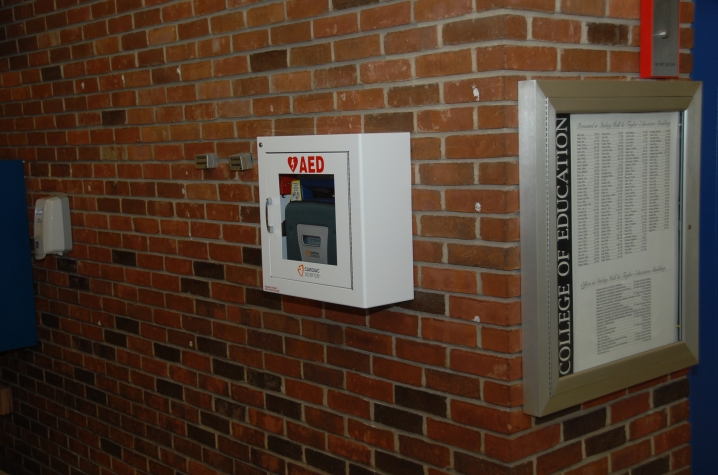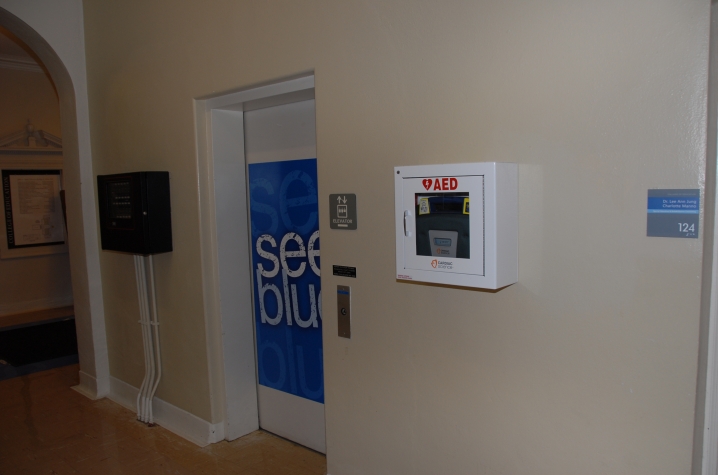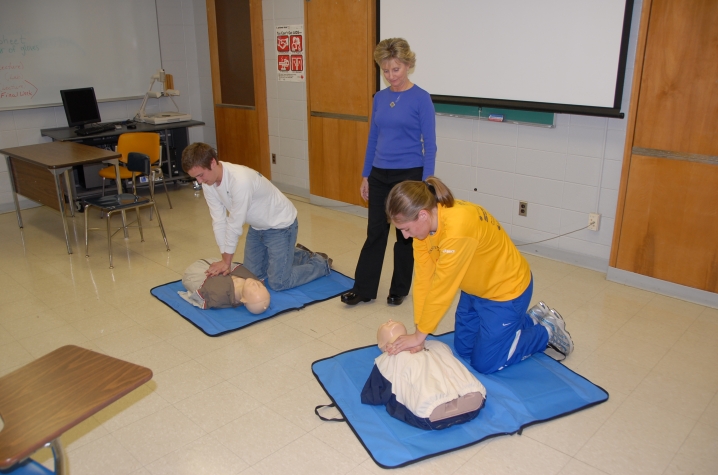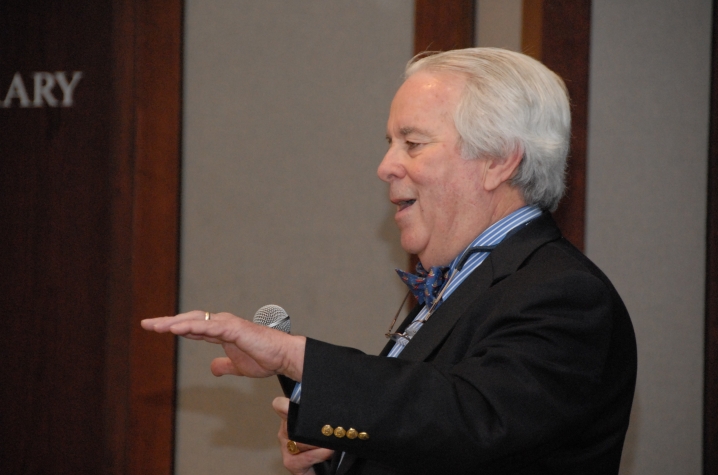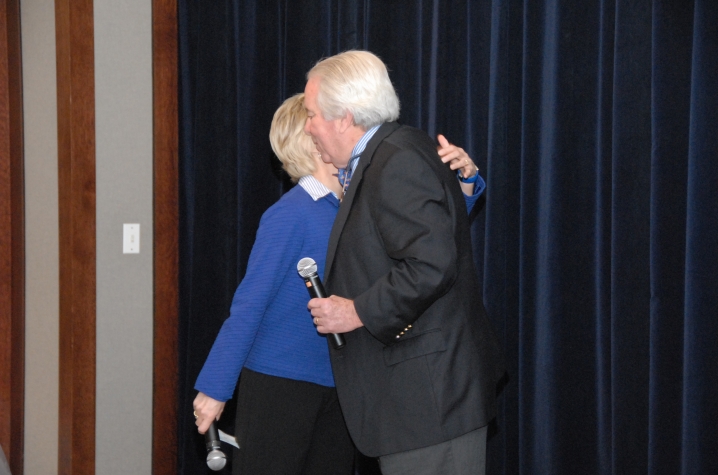Health and Safety on Mind of College of Education
LEXINGTON, Ky. (Oct. 10, 2012) — In 2009, Vicki Sageser helped save the life of a fellow vacationer in North Carolina.
Sageser, an alumna of the University of Kentucky College of Education and a part-time instructor, never hesitated when she heard a woman's screams in their hotel hallway. Thanks to Sageser’s lack of hesitation and years as a cardiopulmonary resuscitation (CPR) instructor, Toby Tyler survived his cardiac arrest and later visited UK to tell his story.
But there was something that day that really bothered Sageser – the hotel in which she was staying did not have an automated external defibrillator (AED), a device that would have improved Tyler's chances of survival.
"An AED is a life saving device," Sageser said. "CPR is important in circulating oxygenated blood to all major organs of the body in cardiac arrest until an AED arrives on the scene. The shock, or defibrillation, given by the AED is what can restart the heart and establish a natural rhythm, not CPR. Chances of survival go up at least 40 percent with an AED. Every minute the AED is delayed reduces the chance of survival of cardiac arrest by 10 percent."
Upon her return to UK, Sageser thought more about the events of that day and wondered what would happen if something similar occurred at the College of Education where she works. Of course because of the work being done by the college’s Department of Kinesiology and Health Promotion (KHP), the Seaton Building is equipped with AEDs and houses many certified faculty, staff and teaching assistants to operate them. However, on the other side of campus, Dickey Hall and Taylor Education Building were not. KHP Associate Professor Jody Clasey and Sageser discussed the situation and knew that had to change.
Thanks to a generous gift from Tyler, Clasey and Sageser were able to kickstart an effort to raise the funds necessary to have two of the devices installed in Dickey Hall and one in Taylor Education Building. In addition to Tyler, former Fayette County physical education teacher Susan Mossman and her husband, Bob, also donated toward the cause.
"The three AEDs already at Seaton Center, and now with the installation of the three new AEDs at Dickey Hall and Taylor Education Building, increase the probability of saving the life of someone in cardiac arrest," Sageser said. "The odds are very high that this could be a reality, as heart disease is the number one killer of men and women in the United States today. Kudos go to the College of Education and Dean Mary John O’Hair for putting the health of their students, faculty and staff first and foremost."
O'Hair's commitment doesn't stop at just clearing the way to have the AEDs installed. She also is offering the opportunity for College of Education faculty and staff to go through training (conducted by Sageser) during work hours and to have their costs for the training and Red Cross certification covered by the college.
"It just makes sense to have our faculty, staff and students prepared to assist in a medical emergency by becoming CPR/AED certified," O'Hair said. "As a college, we believe strongly in making a difference in our local and global education and health communities. Why wouldn't we be prepared to make a difference in our own college and across the university?"
So far, five faculty and staff members whose offices are in Dickey Hall and Taylor Education Building have already received their certification, while a number of others are scheduled to complete training in October.
"Many years ago, I was teaching in the evening in Dickey Hall and someone rushed into my classroom yelling, 'There's a guy out here in the hallway and I think he's dying!' I felt totally unprepared to deal with this but took charge because no one else did," said Fred Danner, professor in the Department of Educational, School and Counseling Psychology. "I called the paramedics and they took care of him. I promised myself that night that, if I ever faced a similar or more serious situation again, I would be sure to have a better idea what to do. So when I found out that a couple of generous donors were providing AEDs to our college, I signed up for the training. I hope I never need to use CPR and/or an AED on anyone, but I feel very fortunate to know that there are trained people in the building, including myself, who might be able to save someone’s life."
Learning how to do CPR or use an AED certainly is not limited to the College of Education's faculty and staff. KHP offers certification courses as part of their normal slate of classes each semester. While all KHP students are required to take Sageser's "Responding to Emergencies" class as a prerequisite for graduation, students from any discipline are encouraged to sign up during their normal registration period. UK employees also are welcome to sign up and use their benefits from the UK Employee Education Program to cover the tuition costs. In addition, the local Bluegrass Chapter of the Red Cross offers training courses. For more information, visit the Red Cross website at www.redcrosslexky.org or call (859) 253-1331.
MEDIA CONTACT: Jenny Wells, (859) 257-5343; Jenny.Wells@uky.edu





